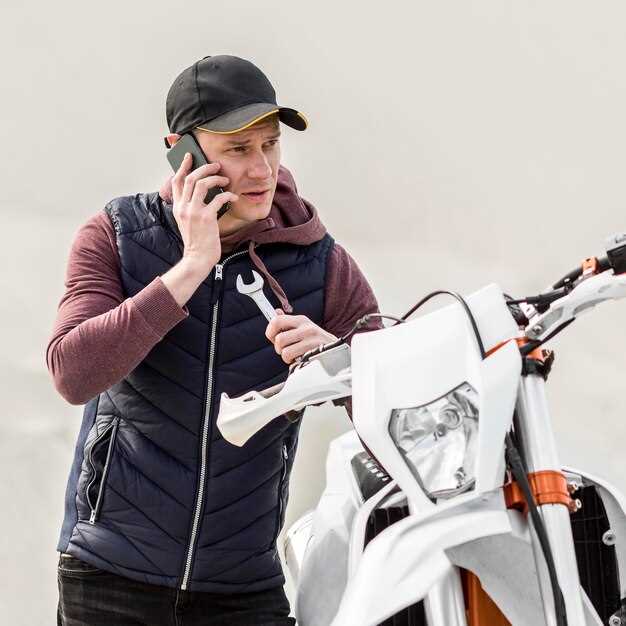
In the world of motorcycling, effective communication is essential for safety and enjoyment. Whether you are riding with a partner or part of a larger group, having a reliable system to talk can significantly enhance your riding experience. Modern motorcycle communication systems offer a range of features designed to keep riders connected while on the road.
When choosing the right communication system, it’s important to consider several factors, including range, audio quality, and compatibility with other devices. Many systems utilize Bluetooth technology, allowing you to talk hands-free, listen to music, or follow GPS directions without taking your hands off the handlebars. This guide aims to help you navigate the available options and find a solution that meets your needs.
In this buyer’s guide, we will explore the various types of motorcycle communication systems, their features, and what to look for when making your choice. By understanding the key components and capabilities of these systems, you will be better equipped to make an informed decision that enhances your riding adventures.
Key Features to Look for in Motorcycle Communication Systems

When selecting a motorcycle communication system, riders should consider several critical features that can greatly enhance their experience on the road. These features not only improve the quality of communication but also ensure safety and convenience during rides.
Audio Quality: High-definition audio is essential for clear conversations between riders. Look for systems that offer noise cancellation technology to filter out wind and engine noise, ensuring that communication remains crisp even at high speeds.
Bluetooth Connectivity: A reliable Bluetooth connection allows the rider to connect the communication system with smartphones, GPS units, and other devices seamlessly. Ensure the system supports the latest Bluetooth standards for the best range and compatibility.
Intercom Range: The effective range of intercom communication is crucial, especially for group rides. Choose a system that offers a substantial communication range, allowing multiple riders to stay connected without interruptions.
Ease of Use: A user-friendly interface is vital for riders to operate the system without distractions. Look for features like voice commands, intuitive controls, and large buttons for glove-friendly operation.
Battery Life: Long-lasting battery performance is essential for extended rides. Opt for systems that offer significant battery life and quick charging options to ensure communication is maintained throughout the journey.
Water Resistance: Given the unpredictability of weather conditions, choose a communication system that is water-resistant. This feature ensures the system functions reliably in rain or adverse weather situations.
Multi-Device Pairing: Ability to pair with multiple devices enhances the communication system’s versatility. This allows riders to stay connected with both their phone and a passenger or other riders simultaneously.
Customizable Features: Some systems offer customizable settings, such as equalizer adjustments and programmable shortcuts. These features allow riders to tailor the communication experience to their personal preferences.
Additional Features: Other beneficial features may include FM radio capabilities, access to voice navigation, and compatibility with other brands. Considering these additional features can enhance the overall functionality of the communication system.
In conclusion, keeping these key aspects in mind will help riders choose an effective motorcycle communication system that meets their needs and enhances their riding experience.
Choosing the Right Communication System for Your Riding Style
When it comes to motorcycle communication systems, selecting the right one significantly enhances the riding experience. Every rider has unique needs based on their riding style, and understanding these needs is crucial for making an informed decision.
If you often ride solo, you might prefer a simpler Bluetooth system that allows you to connect with your smartphone for navigation or music. This style typically requires a system with good audio quality and battery life, ensuring that you can talk effortlessly without interruptions.
For group rides, a more advanced communication system is essential. Systems designed for multiple users enable riders to maintain conversations at varying speeds and distances. Look for features like intercom capabilities and the ability to connect multiple devices, which facilitate seamless communication among the group.
Adventure riders or those who frequently navigate challenging terrains should consider robust systems with enhanced features. These might include noise cancellation, long-range intercoms, and waterproof designs, ensuring clear communication even in harsh conditions. A strong system will help riders talk with confidence, providing safety and camaraderie on the road.
Sport and touring riders may prioritize features such as integrated controls for music and GPS, allowing for a more integrated experience. Systems that provide voice commands can be particularly beneficial, keeping riders focused on the road while easily managing communications.
Ultimately, the right communication system aligns with your individual riding style and preferences. Assess your typical riding scenarios, the importance of features like range and clarity, and how you intend to use the system. By taking the time to evaluate these factors, you can select a system that enhances your rides and keeps conversations flowing smoothly.
Installation and Compatibility Tips for Motorcycle Communication Devices

When selecting a motorcycle communication system, proper installation and compatibility are crucial to ensure seamless interaction during rides. Before proceeding with installation, verify that the system is compatible with your motorcycle’s make and model, as well as with any other devices you plan to connect, such as smartphones or GPS units.
Start by reading the manufacturer’s instructions carefully. Each communication system may have specific requirements that need to be followed for optimal performance. If you’re installing a helmet communication device, ensure that the unit is securely mounted and that the microphone is positioned correctly to pick up your voice without wind interference.
Check if the communication system is compatible with other riders’ devices. Many modern systems allow for pairing with multiple units, enabling group communication. Ensure all riders are using devices that support the same protocols, such as Bluetooth or intercom frequencies, to facilitate smooth talking without interference.
After installation, conduct a test run to ensure that the system functions as expected. Make a few test calls and adjust the volume settings to your preference while riding at different speeds. This will help determine the effectiveness of the system and whether any adjustments are needed to the placement of microphones or speakers.
Finally, keep firmware updated on your communication devices. Manufacturers often release updates that improve connectivity and add features. Regular updates can enhance the system’s performance, allowing for a better communication experience while on the road.




